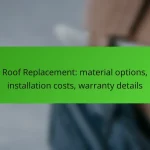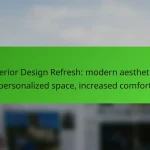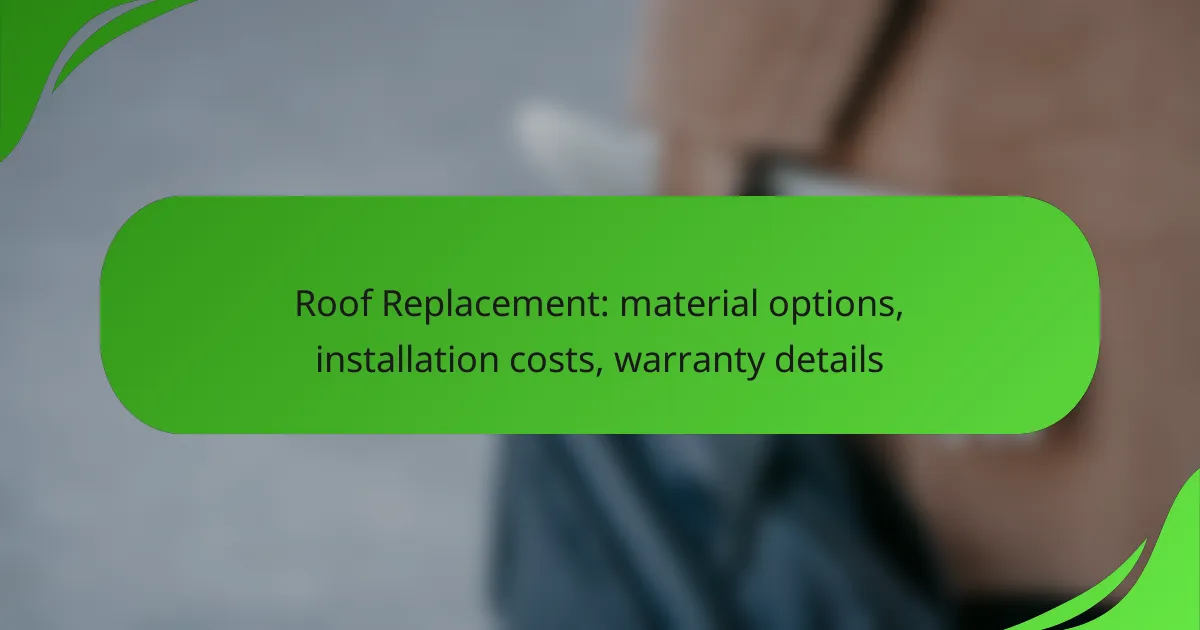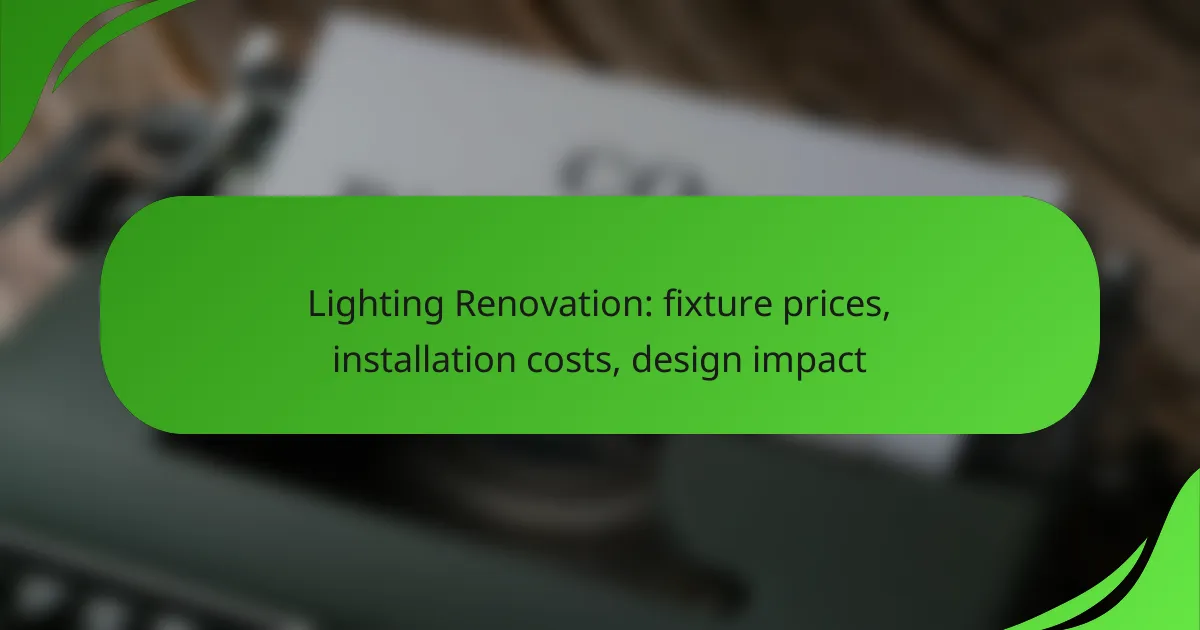Window replacement is a valuable investment that can greatly improve a home’s energy efficiency by reducing heat loss during winter and limiting heat gain in summer, ultimately leading to lower energy bills. The costs associated with installation can vary widely based on factors such as window type, labor rates, and installation complexity, typically ranging from a few hundred to several thousand dollars per window. Homeowners can choose from various styles, including double-hung, casement, and sliding windows, each offering distinct advantages and design possibilities.
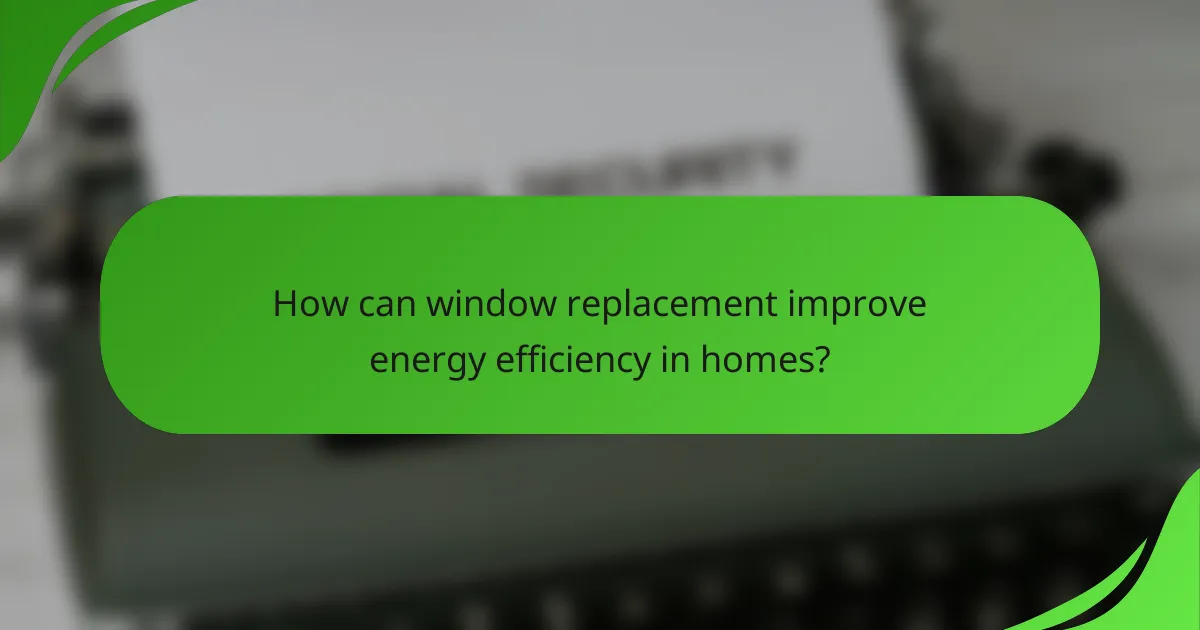
How can window replacement improve energy efficiency in homes?
Window replacement can significantly enhance energy efficiency in homes by reducing heat loss in winter and minimizing heat gain in summer. Upgrading to modern, energy-efficient windows can lead to substantial savings on energy bills over time.
Lower heating and cooling costs
Replacing old windows with energy-efficient models can lower heating and cooling costs by preventing drafts and maintaining a consistent indoor temperature. Homeowners may see reductions in energy bills ranging from 10% to 25%, depending on the climate and the efficiency of the new windows.
To maximize savings, consider the local climate when selecting window types. In colder regions, windows with a higher R-value (insulation rating) are crucial, while warmer areas benefit from low solar heat gain coefficients (SHGC).
Enhanced insulation properties
Modern windows often feature advanced insulation properties that help keep homes comfortable year-round. Double or triple glazing, low-emissivity (Low-E) coatings, and gas fills between panes improve thermal performance significantly compared to single-pane windows.
When evaluating insulation properties, look for windows that meet ENERGY STAR® standards, which indicate they are designed to reduce energy consumption effectively. This can lead to a more sustainable home and a lower carbon footprint.
Energy-efficient window types
There are several energy-efficient window types available, including double-hung, casement, and sliding windows, each offering unique benefits. For instance, casement windows typically provide better air sealing due to their design, while double-hung windows allow for versatile ventilation.
Consider materials as well; vinyl and fiberglass frames generally offer better insulation than aluminum. Additionally, look for windows with Energy Star ratings to ensure they meet efficiency standards suitable for your region.

What are the typical installation costs for window replacement?
The installation costs for window replacement can vary significantly based on several factors, including the type of windows, labor rates, and the complexity of the installation. Generally, homeowners can expect to pay anywhere from a few hundred to several thousand dollars per window, depending on these variables.
Average cost per window
The average cost per window for replacement typically ranges from $300 to $1,000. This estimate includes both the window itself and the installation labor. High-end or custom windows can push the cost even higher, sometimes exceeding $2,000 each.
It’s essential to consider that these prices can fluctuate based on the region, with urban areas often experiencing higher costs due to increased labor rates and demand.
Factors affecting installation costs
Other considerations include the complexity of the installation, such as whether the existing frames need repairs or if new framing is required. Local building codes and permits may also add to the overall expense, so it’s advisable to check these regulations before proceeding.
Cost breakdown by window style
Different window styles come with varying costs. For instance, double-hung windows generally range from $400 to $800, while casement windows can cost between $500 and $1,000. Sliding windows are often priced similarly to double-hung options, making them a popular choice for many homeowners.
Specialty windows, such as bay or bow windows, can be significantly more expensive, often starting at $1,000 and going up from there. When selecting a window style, consider both the aesthetic appeal and the long-term energy efficiency benefits, as these can influence overall savings on utility bills.
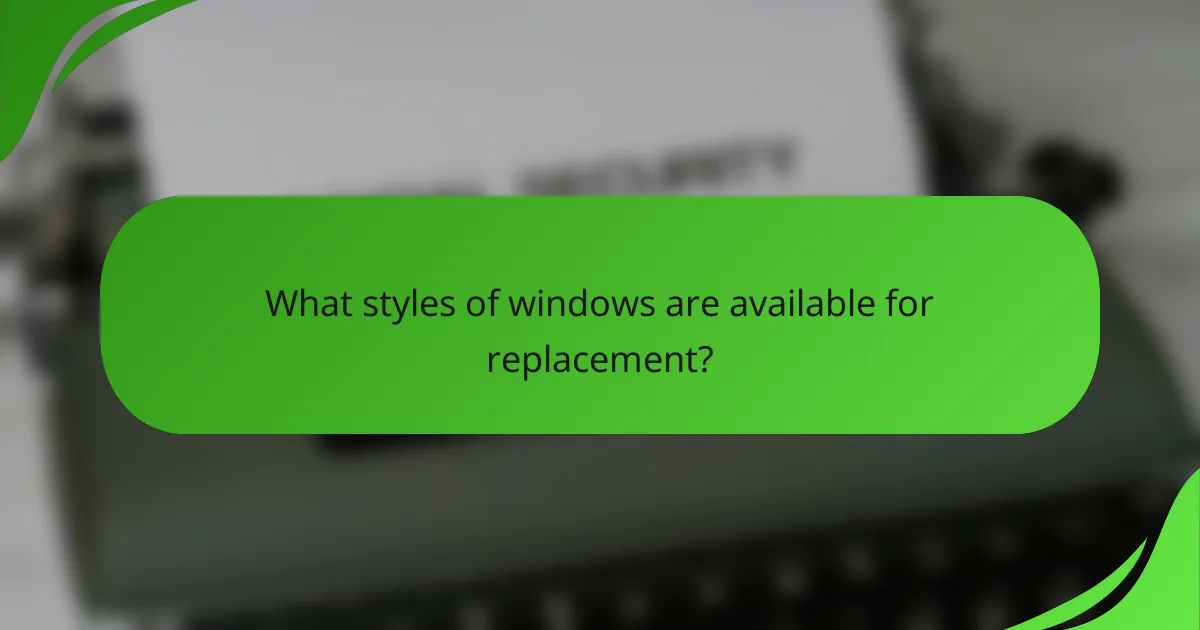
What styles of windows are available for replacement?
When considering window replacement, several styles are available, each offering unique benefits and aesthetic options. The most common styles include double-hung, casement, and sliding windows, which vary in operation, energy efficiency, and design compatibility.
Double-hung windows
Double-hung windows feature two operable sashes that slide vertically. This design allows for better ventilation control, as you can open both the top and bottom sashes simultaneously. They are popular for traditional homes and can enhance curb appeal.
When selecting double-hung windows, consider energy-efficient models with double or triple glazing to improve insulation. Installation costs typically range from $300 to $800 per window, depending on materials and labor.
Casement windows
Casement windows are hinged on one side and open outward, providing excellent ventilation and unobstructed views. They are often favored for modern designs and can be more energy-efficient due to their tight seal when closed.
Installation costs for casement windows generally fall between $400 and $1,000 per window. Ensure you choose durable materials, especially if you live in areas with high wind or severe weather conditions.
Sliding windows
Sliding windows consist of one or more sashes that slide horizontally. They are easy to operate and are ideal for spaces where you want to maximize natural light without sacrificing wall space. Sliding windows work well in contemporary settings.
The cost for sliding window installation usually ranges from $350 to $900 per window. Look for models with energy-efficient glass to reduce heating and cooling costs, especially in regions with extreme temperatures.
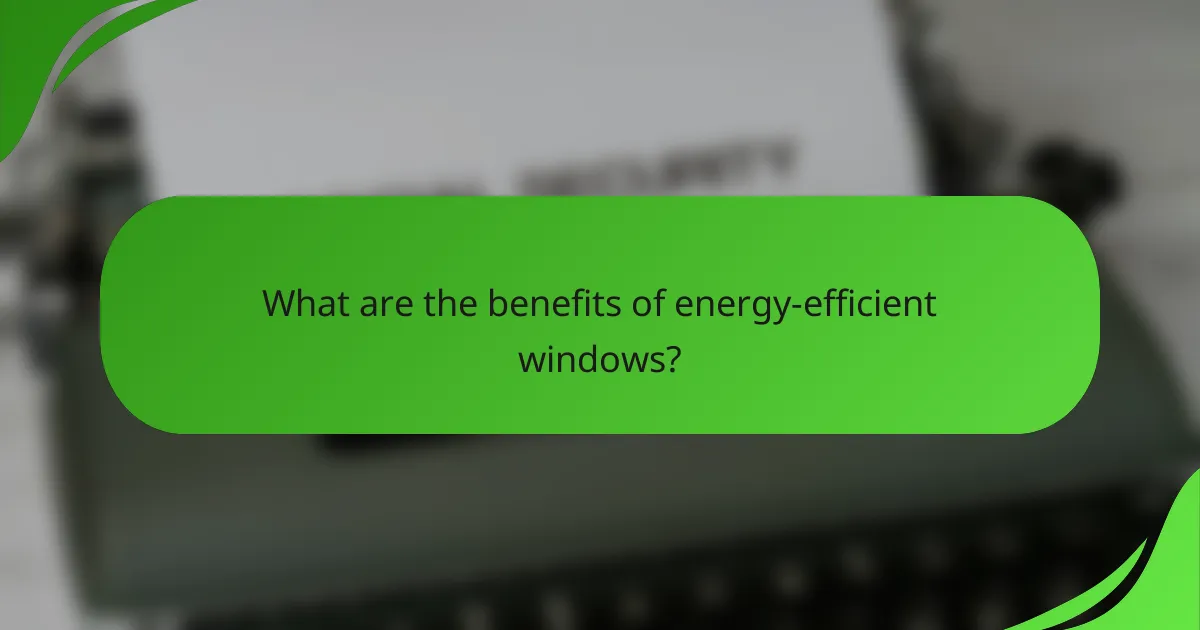
What are the benefits of energy-efficient windows?
Energy-efficient windows provide significant advantages, including lower energy bills and enhanced comfort. By minimizing heat transfer, these windows help maintain a stable indoor temperature, reducing the need for heating and cooling.
Improved home comfort
Energy-efficient windows enhance home comfort by reducing drafts and temperature fluctuations. They often feature multiple panes and gas fills that insulate better than standard windows, keeping interiors warmer in winter and cooler in summer.
For optimal comfort, consider windows with a low U-factor, which measures thermal performance. Look for options that meet or exceed ENERGY STAR standards for your region, ensuring they are suited to local climate conditions.
Increased property value
Installing energy-efficient windows can boost your property’s market value. Homebuyers increasingly seek energy-efficient features, viewing them as long-term savings on utility bills.
In many cases, homeowners can recoup a significant portion of their investment in energy-efficient windows when selling their home. Estimates suggest that this can range from 70% to 90% of the installation cost, depending on the local real estate market.
Environmental impact
Energy-efficient windows contribute to environmental sustainability by reducing energy consumption. Lower energy use means decreased greenhouse gas emissions, which is crucial in combating climate change.
By choosing windows that meet energy efficiency standards, homeowners can play a part in reducing overall energy demand. This not only helps the environment but can also lead to incentives or rebates, depending on local regulations and programs.

What factors should be considered when choosing windows?
When selecting windows, consider energy efficiency, installation costs, and the style that complements your home. Each factor plays a crucial role in ensuring your windows meet your needs while providing long-term savings and aesthetic appeal.
Climate considerations
Your local climate significantly impacts the type of windows you should choose. In colder regions, double or triple-pane windows with low-E coatings can help retain heat, while in warmer climates, windows with reflective coatings can reduce cooling costs.
Consider the orientation of your home as well. South-facing windows can maximize sunlight in winter, while overhangs can provide shade in summer, balancing heating and cooling needs effectively.
Building codes and regulations
Familiarize yourself with local building codes and regulations that may dictate window specifications. These codes often include requirements for energy efficiency ratings, safety standards, and even aesthetic guidelines in historic districts.
Consult with local authorities or a professional contractor to ensure compliance, as failing to meet these regulations can lead to costly fines or the need for reinstallation.
Window frame materials
The choice of window frame materials affects durability, maintenance, and insulation. Common options include vinyl, wood, aluminum, and fiberglass, each with its own benefits and drawbacks.
- Vinyl: Low maintenance and energy-efficient, but limited color options.
- Wood: Excellent insulation and aesthetic appeal, but requires regular upkeep.
- Aluminum: Durable and lightweight, but less energy-efficient without thermal breaks.
- Fiberglass: Strong and energy-efficient, but often more expensive.
Evaluate your budget and maintenance preferences when selecting the right material for your windows.
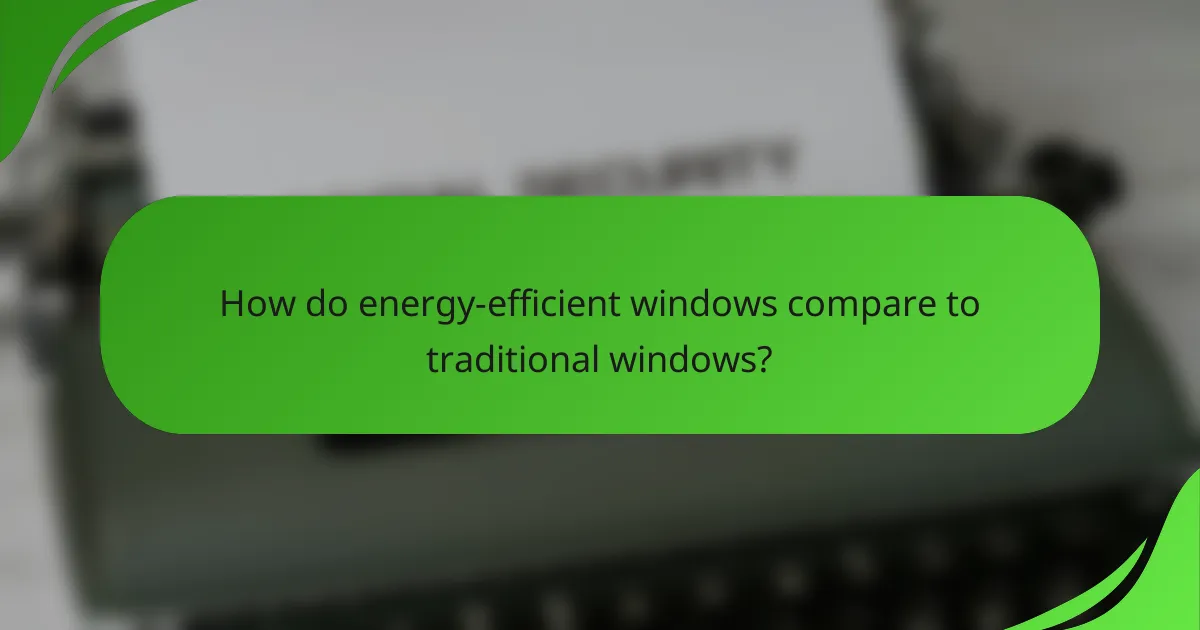
How do energy-efficient windows compare to traditional windows?
Energy-efficient windows significantly outperform traditional windows in terms of insulation and energy savings. They are designed to reduce heat loss in winter and keep homes cooler in summer, leading to lower energy bills and increased comfort.
Installation costs
The installation costs for energy-efficient windows can vary widely, typically ranging from a few hundred to over a thousand USD per window, depending on the type and size. While the upfront investment is higher than traditional windows, the long-term savings on energy bills often justify the expense.
Homeowners should consider additional factors such as installation complexity and the potential need for structural modifications, which can further influence costs. It’s advisable to obtain multiple quotes from licensed contractors to ensure competitive pricing.
Styles
Energy-efficient windows come in various styles, including double-hung, casement, and sliding windows, allowing homeowners to choose based on aesthetic preferences and functionality. Each style can be customized with energy-efficient features like low-emissivity (Low-E) glass and gas fills to enhance insulation.
When selecting a style, consider how it complements the home’s architecture and the specific energy performance ratings. For instance, casement windows often provide better sealing and airflow control compared to traditional double-hung windows, making them a popular choice for energy efficiency.
